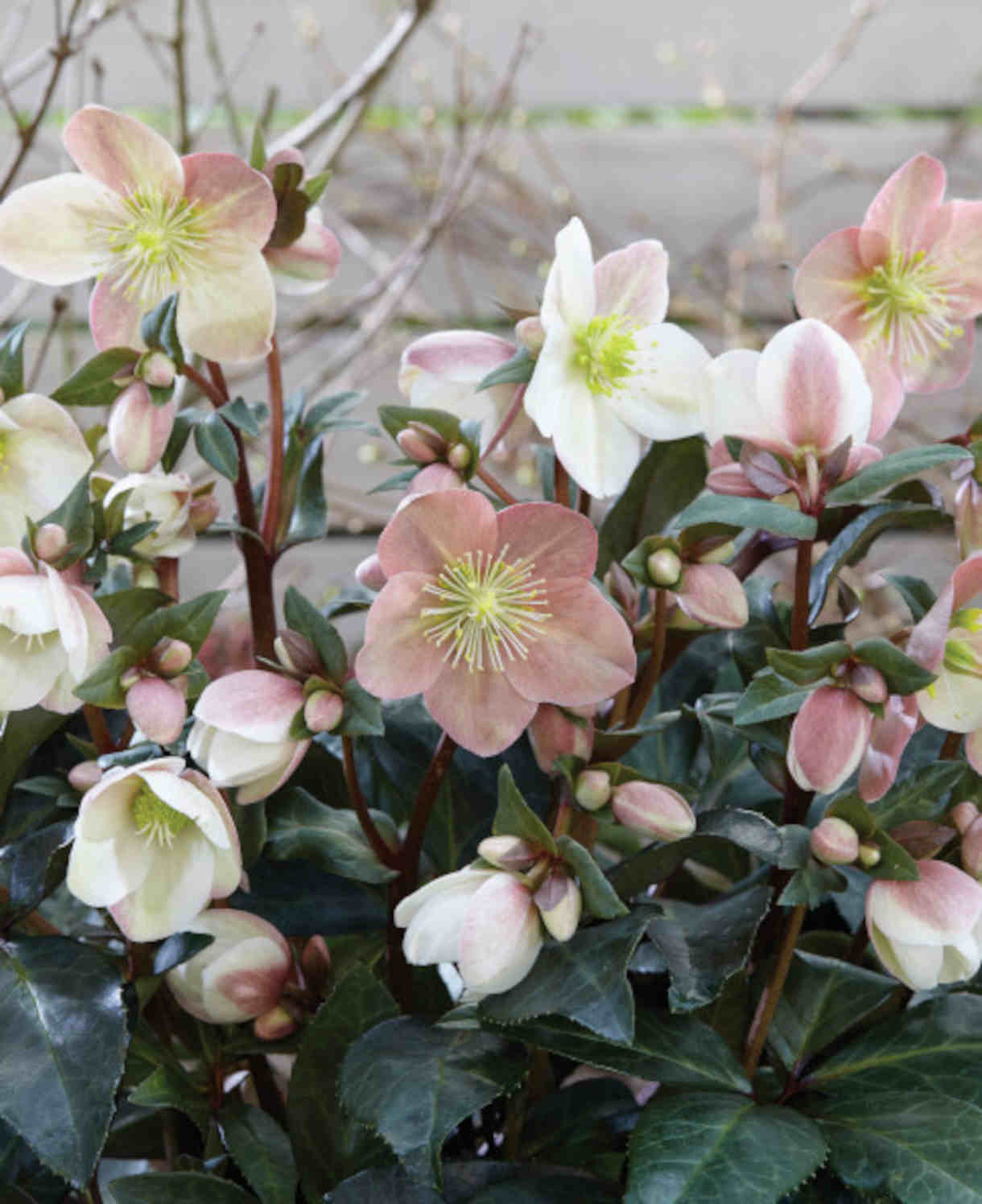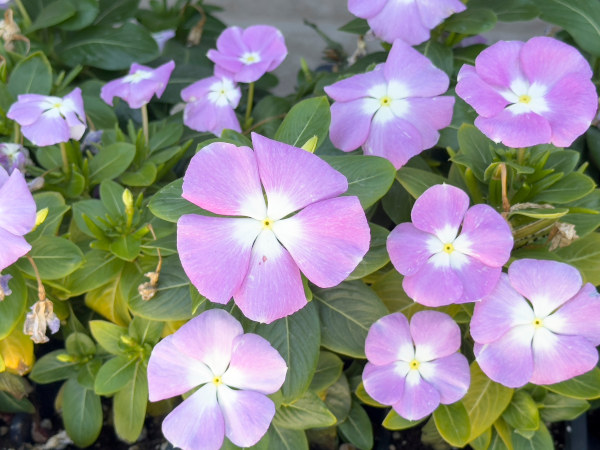How to grow Vinca
Native to Europe, north Africa and southwest Asia, Vinca is a genus of flowering plants. Vinca’s name originates from the Latin vincire which means to bind or fetter - this is due to Vinca’s spreading roots. In English, we refer to Vinca as periwinkle or Bigleaf Periwinkle. While there are plenty of cultivars to choose from, Vinca major - Large Periwinkle - and Vinca minor - Periwinkle - are the most common.
With maximum heights of 30-45cm, Vincas come with an infinite spread and trailing vine. Historically, Vincas were known as a symbol of love between partners owing to their twining nature.
Vincas root along the stems, which is why they can become invasive and are known for enveloping themselves around the roots of other plants, blocking out the light. However, this is what makes Vinca so well-suited for growth as groundcover, due to its dense mass, evergreen foliage and naturally weed-suppressing nature.
Blooming in the spring, Vincas deliver a profusion of single, star-shaped flowers. Ideal for growing in the UK due to their flexibility with growing preferences - they can grow in all positions from partial shade to full sun. The cultivar Vinca Major ‘variegata’ has also won the Award of Garden Merit from RHS (The Royal Horticultural Society) which means it is perfect for growing under UK conditions.

Key Information
Soil pH
Position

Hardiness


Where & when to plant Vinca
You can plant your Vinca in a range of positions. Vincas are versatile and can cope with full sun - up to 8 hours of sunlight a day - to partial shade. Vincas can be grown in flower beds, borders, under trees and shrubs and even in containers. When Vincas are grown in flower beds and borders, they make excellent groundcover for other plants although, be careful not to plant your Vinca plant too close to any plants that are not yet established. The best time to plant Vincas is in spring, when the soil is warmer and there is no chance of frost.
How to plant Vinca
While Vinca can be grown from seed, it can be tricky and time-consuming to get them to grow successfully. So, starting with propagation or an already-established plant is the most efficient way to grow your Vinca
Find a position in your garden bed or border that benefits from at least 4 hours of sunlight per day; Vincas are naturally drawn to sunlight and will grow towards the sun. Make sure that your desired position has moist, well-draining soil. If you do not have well-draining soil, add grit or sand to create sufficient drainage
Dig a hole that is 2-3 times as wide and deep as the roots of your Vinca. Add your plant to the soil and backfill with the soil removed to create the hole. If you are planting multiple Vincas, leave 15-30cm of space between each to allow their roots to spread
Tamp the soil around the plant and settle in by watering. While your Vincas are growing, water moderately once or twice a week - as Vincas are drought-tolerant, you can afford to let the soil dry out slightly before watering again.

What to plant with Vinca
Use Vinca’s weed-suppressing nature to your advantage by planting underneath trees and shrubs, or next to spring bulbs such as Tulips. Hardy ferns and oriental hellebores are also great choices - try Cheilanthes tomentosa for a versatile woodland fern and Helleborus Orientalis Anemone for incredible ornamental beauty.



How to care for Vinca
Pruning & Deadheading
As always, remove any dead, diseased or straggly stems as you see them. Because of Vinca’s invasive nature, you can trim it back as needed to stop it from spreading too far or from getting too close to neighbouring plants. The best time to prune is in autumn, once the flowering season has ended.
Watering
Water Vincas regularly in the early stages of growth. Once established, Vinca is drought-tolerant, so you can afford to water moderately at this point.
Cold Protection
As a fully hardy perennial, Vincas are cold-hardy and will naturally die back over the winter before re-emerging in the following spring. For areas with colder temperatures, Vinca major is the hardier of the two varieties and will be more likely to survive.
Pests & Diseases
Vincas are prone to common garden pests such as aphids, spider mites and whiteflies.
How to propagate Vinca
The best way to propagate Vinca is by division in the spring. Vinca’s short stature means it can be difficult to take effective cuttings from the plant. Start the propagation process by choosing a healthy parent plant.
Keeping the root systems as intact as possible, dig up the parent plant and gently cut off a section of established root. Do not cut away more than ⅓ of the total root system from the parent plant using sterile and sharp tools.
As soon as you have taken your divisions, replant the parent plant and water in. Add your divisions to a pot with compost and bring them indoors to grow in a controlled and dry environment.
Water your divisions regularly and re-pot into bigger pots as needed. The following season, plant outdoors in a position with well-draining soil.
Common Vinca Questions
Does Vinca like sun or shade?
Vinca enjoys a range of positions - from full sun to partial sun each day. Vinca is drought and heat tolerant, naturally grows towards the sun.
Where does Vinca grow best?
As well as a position with some daily sun exposure, Vinca needs moist, well-draining soil to survive - so be sure to water your plant regularly. Vinca is hardy once established.
Does Vinca come back every year?
Yes, while many gardeners choose to grow Vincas as annuals - and some cultivars are more suited to annual growing - Vincas can be grown as evergreen perennials in the UK.





